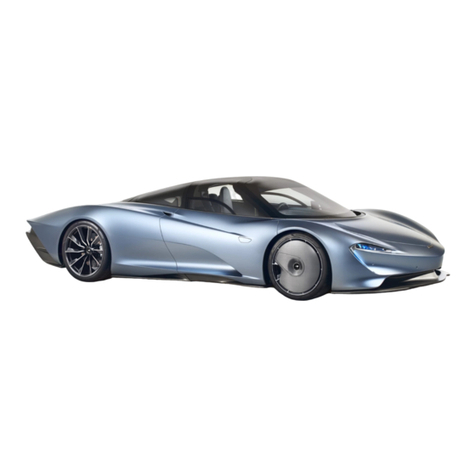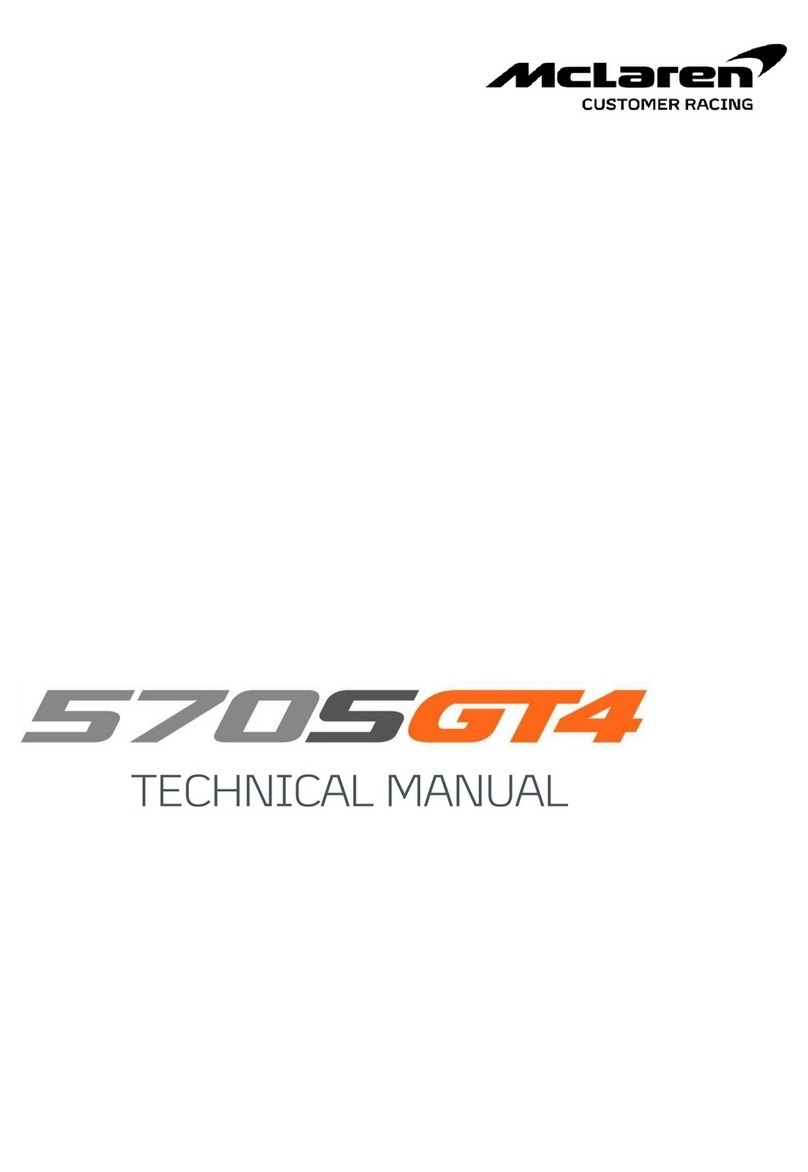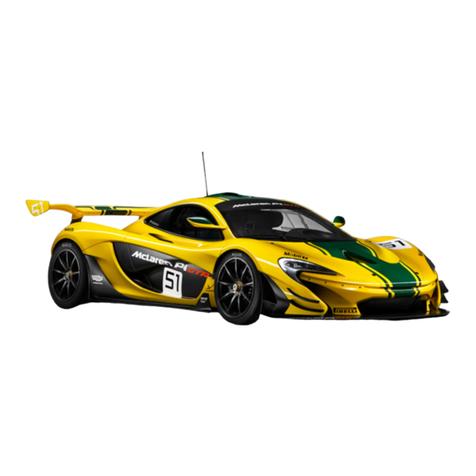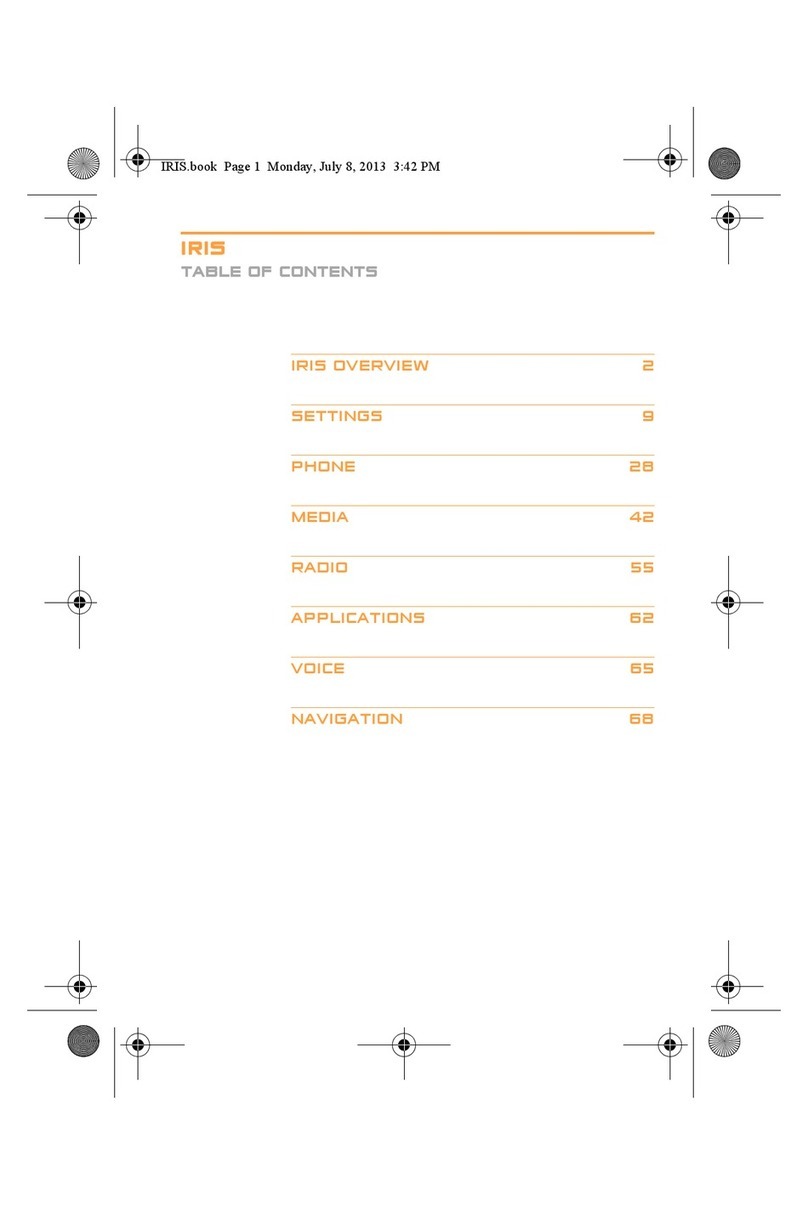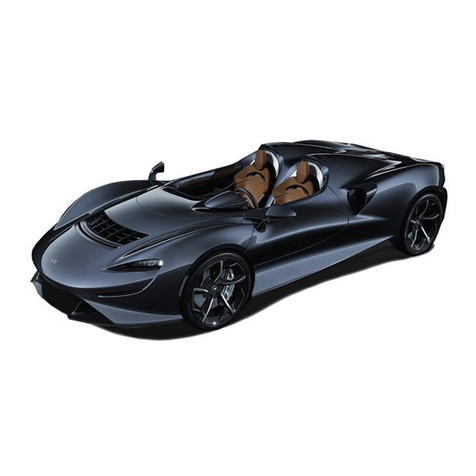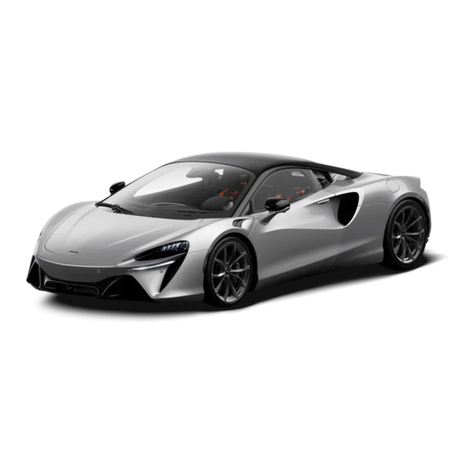
Cooling down
McLaren recommend that you take time to cool
the vehicle down during track driving, due to the
high temperatures that may be generated by
the brakes and transmission which could affect
performance. Time should be taken to drive the
vehicle at a slower speed without using hard
braking or carrying out excessive gear changes,
this uses the airflow to cool the vehicle.
McLaren recommend that time is allowed for
your vehicle to return to normal operating
temperatures before leaving the track.
NOTE: When stopping the vehicle
directly after performance driving,
McLaren recommend that the ignition
is not immediately switched off or
parking brake applied. McLaren
recommend that the engine is left to
idle prior to the ignition being switched
off.
NOTE: Please refer to your Service and
Warranty Guide for track and
competition use implications.
Stored data
There are a number of components in your
vehicle which collect data and store it temporarily
or permanently. This technical data provides
information relating to areas such as the
condition of the vehicle, any events which have
taken place and any malfunctions your vehicle
may be experiencing or has experienced in the
past.
These include, for example:
•operating conditions of system
components, e.g. fluid levels.
•the vehicle’s status messages and those of
its individual components, e.g. ‘Windscreen
washer fluid low’.
•malfunctions and defects in important
system components, e.g. ‘Light switch fault’.
•vehicle reactions and operating conditions
in special driving situations, e.g. air bag
deployment.
•ambient conditions, e.g. outside
temperature.
This data is of an exclusively technical nature
and can be used to:
•assist in recognising and rectifying faults
and defects.
•analyse vehicle functions, e.g. after an
accident.
•optimise vehicle functions.
The data cannot be used to trace the vehicle’s
movements.
When your vehicle is serviced, technical
information can be read from the vehicle
including:
•repair service history.
•warranty events.
•quality assurance.
This information can be read by employees of
the service network (including manufacturers)
using special diagnostic testers. More detailed
information can be obtained from it, if required.
After a fault has been rectified, the information
is deleted from the fault memory or is continually
overwritten.
When operating the vehicle, situations may occur
where technical data, in connection with other
information, could be traced to a person.
Examples include:
6
Introduction








